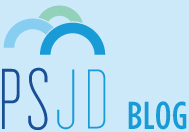Expert Opinion: Five-step Strategic Planning for Your Postgraduate Public Interest Job Search
Our “Expert Opinion” series moves into 2011 with a post on job search strategery from our friend Nicole Ayala…
Nicole Ayala is the Assistant Director, Public Interest & Fellowships at the University of Connecticut School of Law’s Career Planning Center. Nicole’s extensive experience in the public service field includes having worked for a legal services organization, the federal government, unions and nonprofits. She received her law degree from Northeastern University School of Law, a Master of Divinity from Harvard and a BA in political science from the University of Iowa.
Now, more than ever, landing that public-interest dream job right out of law school is a daunting task. As a result, you should be thinking strategically about how to position yourself to get the job you want when hiring picks back up. What follows is a five-part outline to use in developing a strategic plan that will move you closer to your career objectives.
- Describe your immediate employment goal(s) as precisely as possible. Think in terms of both outcomes and skills. For example, an outcome-based statement would be “I want to work in my home state as a legal services attorney, focusing on immigration and domestic violence issues.” A skills-based statement would be, “I want to do a combination of litigation and policy advocacy work, with a substantial amount of client interaction.” Specificity is important, as it not only helps you to articulate a concrete goal, but it also serves as the foundation for building your strategic plan.
- List obstacles/challenges. This section should also address outcomes and skills. Building off the example above, the challenges could include the following: “The legal services organization in my home state just did layoffs, I have yet to argue a motion in court, and I only speak English.” Other categories of possible obstacles could include logistics (e.g. “I need to have an income now,”) attitude (e.g. “I refuse to look for a non-legal job,”) and networking (e.g. “What’s an informational interview?”).
- Brainstorm potential strategies for addressing challenges. Like any brainstorming session, no idea should be left unexplored, no matter how idealistic or obvious. Often this is how truly innovative strategies are formed. For example, only speaking English definitely presents a challenge to getting hired to do immigration work for a legal services organization. Possible solutions for remedying this problem could range from the extreme of moving to another country for a language immersion experience to the relative ease of buying the Rosetta Stone program of your choice.
- Prioritize strategies based on feasibility and marketability. You should be able to prioritize the strategies that are feasible for you based on your personal circumstances (e.g. cash flow, geographic restrictions, family responsibilities), but you may want to talk to your law school’s public interest career advisor for input on determining which strategies to pursue based on marketability. Your advisor will have knowledge of the hiring criteria and skills that public interest organizations value most. By addressing both internal and external factors, hopefully you will be able to create a list that is both realistic and well-suited to your targeted position or organization.
- Develop an action plan. Once you have identified your priority strategies, think through the specifics of how to make them happen. Generally, an action plan should include the following three components: tasks (what), resources (what / how / who) and timeline (when). Returning once again to our example, let’s assume you decide to make the bold move of going to South America for six months to learn Spanish. Your action plan might look like this:
-
- Tasks: Research language immersion programs and costs. Find out if there are any visa requirements or travel restrictions. Make sure I can sublet my apartment. Check with my student loans lender to see if deferment is a possibility.
- Resources: Family members (cost). Fellow classmates (program recommendations). Mentor (encouragement). Landlord (finding a subletter). Personal savings account (cost). Temporary job (cost).
- Timeline: One month from now: Complete research on programs. Two months from now: Speak to at least two graduates of the program and figure out travel logistics. Three months from now: Decide on program. Four months from now: Arrange to have domestic issues taken care of, including apartment sublet and loan deferment. Five to six months from now: Move and start program.
[On a related note, the PSLawNet Blog recently posted about Spanish language immersion programs.]
***
There is no question that the current employment climate is difficult for public interest law students and graduates. But jobs are out there, and you will do yourself a tremendous service by taking a methodical approach to finding the right position for you. Good luck!













